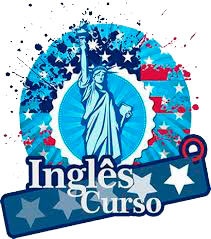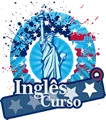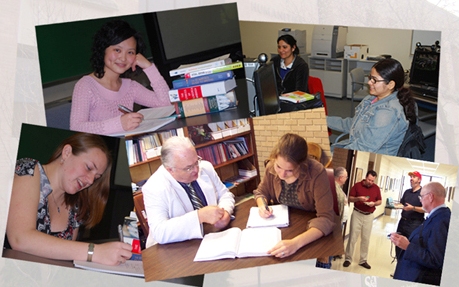A presidente Dilma Rousseff visitou, nesta nesta terça-feira, a Universidade de Harvard, em Boston, nos Estados Unidos. A brasileira encontrou a presidente da instituição de ensino, Drew Faust, com quem assinou uma série de convênios. Além de Harvard, Dilma firmou parcerias com o Instituto de Tecnologia de Massachusetts (MIT) para impulsionar o programa de bolsas de estudo Ciência sem Fronteiras. Dilma, no início da noite, proferiu uma palestra na Kennedy School of Government (HKS), especializada em administração pública. A HKS, uma das novas escolas de pós-graduação da universidade, tem um corpo estudantil com forte representação internacional – cerca de 50% de seus 2.860 alunos representando 140 países. O Ciência sem Fronteiras é um projeto educacional com forte investimento governamental e que prevê conceder 75 mil bolsas em quatro anos, com o objetivo de que o Brasil avance em tecnologia e inovação através do intercâmbio de pesquisadores, estudantes e professores entre instituições brasileira e do exterior. O programa visa ao envio de brasileiros às universidades e centros de pesquisa científica mais importantes do mundo, para que regressem a seu país e apliquem os conhecimentos adquiridos, e, por outra parte, pretende atrair pesquisadores e estudantes para o Brasil. A primeira escala de Dilma será o MIT, situado em Cambridge, e que, em 2011, se vangloriava em ter 77 prêmios Nobel (entre diplomados
History of Mechanical Engineering Por: Roberto Fabrini Mechanical engineering experienced its growth during the time of the World Wars. This growth can be attributed to the need for building newer war machines during that time. As a result of this need, more money was allocated towards research in this field and hence it began to develop as a unique area of study. Over the years, mechanical engineering has expanded its scope and it has also a noteworthy role in all other engineering areas. Extracted from www.suite101.com A História da Engenharia Mecânica A Engenharia Mecânica experimentou seu crescimento durante o período das Guerras Mundiais. Esse crescimento pode ser atribuído à necessidade da construção de novas máquinas no período da guerra. Como resultado dessa necessidade, mais dinheiro foi alocado em pesquisas nesse campo e, portanto, iniciaram o desenvolvimento de uma única área de estudo. Através dos anos, a Engenharia Mecânica tem expandido sua abrangência e tem um papel notável em todas as outras áreas de engenharia. Translated by Roberto Fabrini ([email protected]) Vacabulary Mechanical Engineering Engenharia Mecânica Machines Máquinas
Injection Molding Autor:Roberto Fabrini Injection molding (British English: moulding) is a manufacturing process for producing parts from both thermoplastic and thermosetting plastic materials. Material is fed into a heated barrel, mixed, and forced into a mold cavity where it cools and hardens to the configuration of the mold cavity. After a product is designed, usually by an industrial designer or an engineer, molds are made by a moldmaker (or toolmaker) from metal, usually either steel or aluminum, and precision-machined to form the features of the desired part. Injection molding is widely used for manufacturing a variety of parts, from the smallest component to entire body panels of cars. Extracted from www.wikipedia.com Moldagem por injeção Moldagem por injeção é um processo de manufatura para produção de componentes em materiais termoplástico ou termofixo. O material é alimentado em um cilindro aquecido, misturado e transferido sob pressão para dentro da cavidade de um molde onde é refrigerado e endurecido no formato da cavidade. Após o produto ser projetado, normalmente por um projetista industrial ou um engenheiro, os moldes são construídos em metal por um ferramenteiro de moldes, geralmente em aço ou alumínio, e precisamente usinados para que tenha as características desejadas pelo produto. A moldagem por injeção é grandemente utilizada para a produção de diversos componentes, desde os menores componentes até grandes painéis utilizados em carros. Translated by Roberto Fabrini ([email protected]) Vocabulary Thermoplastic material Material termoplástico Thermosetting material Material termofixo Mold cavity Cavidade (formas) Moldmaker (toolmaker) Ferramenteiro Steel Aço Aluminum Alumínio
Injection Molding Injection molding (British English: moulding) is a manufacturing process for producing parts from both thermoplastic and thermosetting plastic materials. Material is fed into a heated barrel, mixed, and forced into a mold cavity where it cools and hardens to the configuration of the mold cavity. After a product is designed, usually by an industrial designer or an engineer, molds are made by a moldmaker (or toolmaker) from metal, usually either steel or aluminum, and precision-machined to form the features of the desired part. Injection molding is widely used for manufacturing a variety of parts, from the smallest component to entire body panels of cars. Moldagem por injeção Moldagem por injeção é um processo de manufatura para produção de componentes em materiais termoplástico ou termofixo. O material é alimentado por um funil, misturado e transferido sob pressão para dentro da cavidade de um molde onde é refrigerado e endurecido no formato da cavidade. Após o produto ser projetado, normalmente por um projetista industrial ou um engenheiro, os moldes são construídos em metal por um ferramenteiro de moldes, geralmente em aço ou alumínio, e precisamente usinados para que tenha as características desejadas pelo produto. A moldagem por injeção é grandemente utilizada para a produção de diversos componentes, desde os menores componentes até grandes painéis utilizados em carros. Translated by Roberto Fabrini ([email protected])
What Is an Algorithm? An algorithm is a sequence of instructions that tells how to solve a particular problem. Once the problem has been identified, the next step is to select the best method for solving it. If the problem is a familiar one, standardized algorithms may be available from program libraries. But if standard algorithms are not available or suitable, a new algorithm must be written and then added to the program library. An algorithm must be specified exactly, so there can be no doubt about what to do next, and it must have a finite number of steps. A computer program is an algorithm that is written in a language that a computer can understand, but the same algorithm could be wirtten in several different languages. VOCABULARY Once= uma vez Standardized= padronizados Added= acrescentado, incorporado There can be no doubt= não pode haver dúvida Steps= passos, etapas
Programming Languages Just as there are many human languages, so there are many computer languages. In the early days, people programmed using the computer’s binary code, or what we call “machine language”. When this became difficult, mnemonics were used to make life easier. This is called “assembly language” programming. Finnally, there are the “high-level” languages like BASIC, FORTRAN and ALGOL. These are much more similar to everyday language, and are translated directly or indirectly into the computer’s machine code using the computer’s firmware. BASIC is the language most often used to introduce programming. VOCABULARY In the early days= no princípio, no início Mnemonics= arte de desenvolver a memória mediante processos auxiliares como a associação; mnemônica To make easier= tornar mais fácil High-level= alto nível BASIC= Beginners All-puspose Symbolic Instruction Code FORTRAN= FORmula TRANslation ALGOL= ALGOrithmic Language Firmware= “software” armazenado em ROM em vez de disco
Different Kinds of Memory Read only memory (ROM)– In most computers it is useful to have some of the instructions or whole programs permanently stored inside the computer. There are particular kinds of chips which enable us to do this so that the memory is not lost even when the machine is switched off. These are called ROM chips. ROM stands for “read-only memory”. The word “non-volatile” is often used to describe this kind of memory – meaning that it is not destroyed when the power is switched off. Random-access memory (RAM)– The other kind of memory found inside computers is called RAM. Another name for it is “read/write memory”. RAM chips are the kind which lose their contents when the power is lost – so this kind of memory is sometimes also described as “volatile”. In the computer, RAM is the working memory. Back-up memory– The last kind of memory which concerns us is “back-up” memory. This is memory outside the main body of the computer in which programs can be kept for future use or in which data can be kept until the computer is ready to use it. It could be a cassette tape or a magnetic disk. VOCABULARY Chip= dispositivo que contém muitos transistores e outros componentes montados sobre uma peça de silício Enable us= capacita-nos Random Access memory= tipo de memória da qual a informação pode ser instantaneamente copiada, não importando onde ela esteja localizada; memória de acesso randômico ou aleatório Concern us= diz respeito a nós, concerne a nós
Binary Numbers Binary numbers are well suited for use by computers, since many electrical devices have two distinct states: on and off. They are the numbers computers themselves understand. Composed entirely of zeros and ones, they express all values in powers of two. The advantage of the binary system is that you only need two symbols (0 and 1) to express any number, no matter how big it is. Since computers are basically just large groups of switches, and since these switches can only be either on or off, binary system fits right in; you just define 0 as off and 1 as on and then binary numbers tell the computer which switches to throw. The table below shows some numbers written in binary and decimal form. Note that writing numbers in binary requires more digits than writing numbers in decimal. Decimal Binary Decimal Binary 0 0 11 1011 1 1 12 1100 2 10 13 1101 3 11 14 1110 4 100 15 1111 5 101 16 10000 6 110 17 10001 7 111 18 10010 8 1000 19 10011 9 1001 20 10100 10 1010 VOCABULARY Well suited= well appropriate = bem adequados, aprorpiados In powers= em potências No matter= não importando Since= uma vez que Switches= chaves Either … or= ou … ou Fits = suits = é adequado, apropriado.
Artificial Intelligence Artificial intelligence is the branch of computer science that deals with using computers to simulate human thinking. It s concerned with building computer programs that can solve problems creatively, rather than simply working through the steps of a solution designed by the programmer. One of the main problems of artificial intelligence (AI) is how to represent knowledge in the computer in a form such that it can be used rather than merely reproduced. A computer that tells you the call number of a library book is not displaying artificial intelligence; it is merely echoing back what was put into it. Artificial intelligence would come into play if the computer used its knowledge base to make generalizations about the library’s holdings or construct bibliographies on selected subjects. VOCABULARY Deals with= trata de… Rather than= em vez de Echoing back= devolvendo Would come into play= entraria em ação Library’s holdings= arquivos da biblioteca
What Happens Inside a Computer? When we sit down at a computer, we type on a keyboard which is one of the means of inputting data. And when we type on this keyboard, each letter or number is converted into a series of 0s and 1s. This binary language is what the computer understands. After being converted into 0s and 1s, the data are then changed into electrical impulses which travel over a cable to the computer, where they are stored in memory. Each computer word, called a byte, is assigned a place in a memory cell to await processing. The data, now in the memory cells, are acted upon and processed according to the program being used. The output, or final result, is then achieved and converted back into numbers and letters, which is displayed on TV screen or printed on paper by a printer. Vocabulary Keyboard= teclado Binary language= linguagem que o computador entende, composta de zeros e uns; linguagem binária. Travel= passam de um ponto para outro Byte= oito dígitos binários; oito “bis” Assigned= given = indicado, especificado Achieved= accomplished = alcançado Printer= máquina que imprime; impressora


